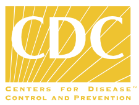
STI

Fact:
MOST PEOPLE WHO HAVE A Sexually Transmitted Infection (STI) DON’T HAVE ANY SYMPTOmS
HAVEN’T BEEN TESTED SINCE YOUR LAST PARTNER?
CLICK THE BUTTON BELOW TO FIND LOW-COST OR NO-COST TESTING NEAR YOU:
EVEN IF YOUR GENITALS TEST NEGATIVE FOR AN STI, YOU MAY STILL TEST POSITIVE SOMEWHERE ELSE
While most people think of STI testing in relation to their genitals only, it’s important to get tested at all sites on your body where you’ve had sexual contact—including the throat and rectum—for chlamydia and gonorrhea.
A general urine screening isn’t enough to confirm that you have a negative STI status.
You can also have what’s called a “co-infection,” which is when you experience two or more STIs at the same time.
ABOUT COMMON STIs


HIV
HIV stands for “Human Immunodeficiency Virus.” If untreated, it can lead to Acquired Immunodeficiency Syndrome (AIDS). HIV-negative people who are at risk of getting HIV through sex or injection drug use can talk to their provider about prescribing PrEP, a daily prescription pill that reduces the risk of getting HIV from sex by more than 90%. (Find out more about accessing PrEP in Wyoming at WY PrEP Matters.)
Once you get HIV, you have it for life. When people living with HIV are treated with antiretroviral therapy (ART) as prescribed, the amount of HIV in their blood can become undetectable and allow them to live long, healthy lives, with effectively no risk of transmitting HIV to an HIV-negative partner through sex. Ask when you go in for your next STI test if getting an HIV test is right for you.

CHLAMYDIA
Chlamydia is a common STI that can cause infection among men and women. It can cause permanent damage to a woman’s reproductive system, making it difficult or impossible to get pregnant later. Chlamydia often has no symptoms, but it can cause serious health problems, even without symptoms. If symptoms occur, they may not appear until several weeks after having sex with a partner who has chlamydia.

GENITAL HERPES
Genital herpes is an STI caused by two types of viruses: Herpes simplex virus type 1 (HSV-1) and herpes simplex virus type 2 (HSV-2). HSV-1 often causes oral herpes, which can result in cold sores or fever blisters on or around the mouth. Most people with oral herpes get it during childhood or young adulthood from non-sexual contact with saliva. Genital herpes often has no symptoms, but it can cause serious health problems, even without symptoms. Skin-to-skin contact can transmit oral herpes to the genital area, and genital herpes to the oral area.

GONORRHEA
Gonorrhea is an STI that can cause infection in the genitals, rectum, and throat. It is very common, especially among people ages 15-24 years. Gonorrhea often has no symptoms, but it can cause serious health problems, even without symptoms.

HEPATITIS B
Hepatitis B is spread when blood, semen, or other body fluids from a person infected with the virus enter the body of someone who is not. This can happen through sex, sharing drug-injection equipment, or from mother to baby at birth. For many people, hepatitis B is a short-term illness; however, for some people, it can lead to cirrhosis or liver cancer. The best way to prevent hepatitis B is to get vaccinated; ask when you go in for your next STI test if the vaccination is right for you.

HEPATITIS C
Hepatitis C is a liver infection spread through contact with blood from an infected person, usually by sharing needles or other equipment used to prepare and inject drugs. In more than half of people who become infected, hepatitis C can lead to cirrhosis and liver cancer. Currently, the CDC recommends one-time hepatitis C testing of all adults (18 years and older) and all pregnant women during every pregnancy. There is no vaccine for hepatitis C, but treatments can cure most people with hepatitis C in 8 to 12 weeks. When you go in for your next STI test, your nurse or doctor will help determine if a hepatitis C test is necessary.

HPV
HPV, or human papillomavirus, is a common virus that can cause cancers later in life. HPV is spread through intimate skin-to-skin contact. You can get HPV by having vaginal, anal, or oral sex with someone who has the virus, even if they don’t have signs or symptoms. Nearly everyone who is not vaccinated will get HPV at some point in their lives.

MGEN
Mycoplasma genitalium (Mgen) is an STI that can cause infection among people who are sexually active, and a person with Mgen can pass the infection to someone even when they have no signs or symptoms. It can infect the cervix (opening to the uterus), inside the penis (the urethra), or the rectum.
Sexually active people can get Mgen by having vaginal or anal sex without a condom with someone who has the infection. Researchers are still determining whether sex partners can spread Mgen through oral sex.

MPOX
Mpox spreads through close or intimate contact with a person with mpox, direct contact with an infected animal, or contact with contaminated objects.
Typically, mpox symptoms start within 21 days of exposure to the virus. People with mpox often get a rash that may be located on hands, feet, chest, face, or mouth or near the genitals, including penis, testicles, labia, and vagina, and anus. A person can spread mpox from the time symptoms start until the rash has fully healed.

SYPHILIS
You can get syphilis through direct contact with a syphilis sore during vaginal, anal, or oral sex. Sores can commonly occur in, on, or around the penis, vagina, anus, rectum, lips, or mouth. Pregnant people with syphilis can also pass syphilis to their unborn child. Your doctor will need to draw your blood to test for syphilis, but with the right antibiotics, syphilis is curable.

TRICH
Trichomoniasis (or “trich”) is a very common STI caused by infection with trichomonas vaginalis (a protozoan parasite). Although symptoms vary, most people who have trich cannot tell they have it. About 70% of people with the infection do not have any signs or symptoms.

ARE YOU AT HIGH RISK OF GETTING HIV THROUGH SEX OR INJECTION DRUG USE?
PrEP may be a good HIV prevention option for you.




